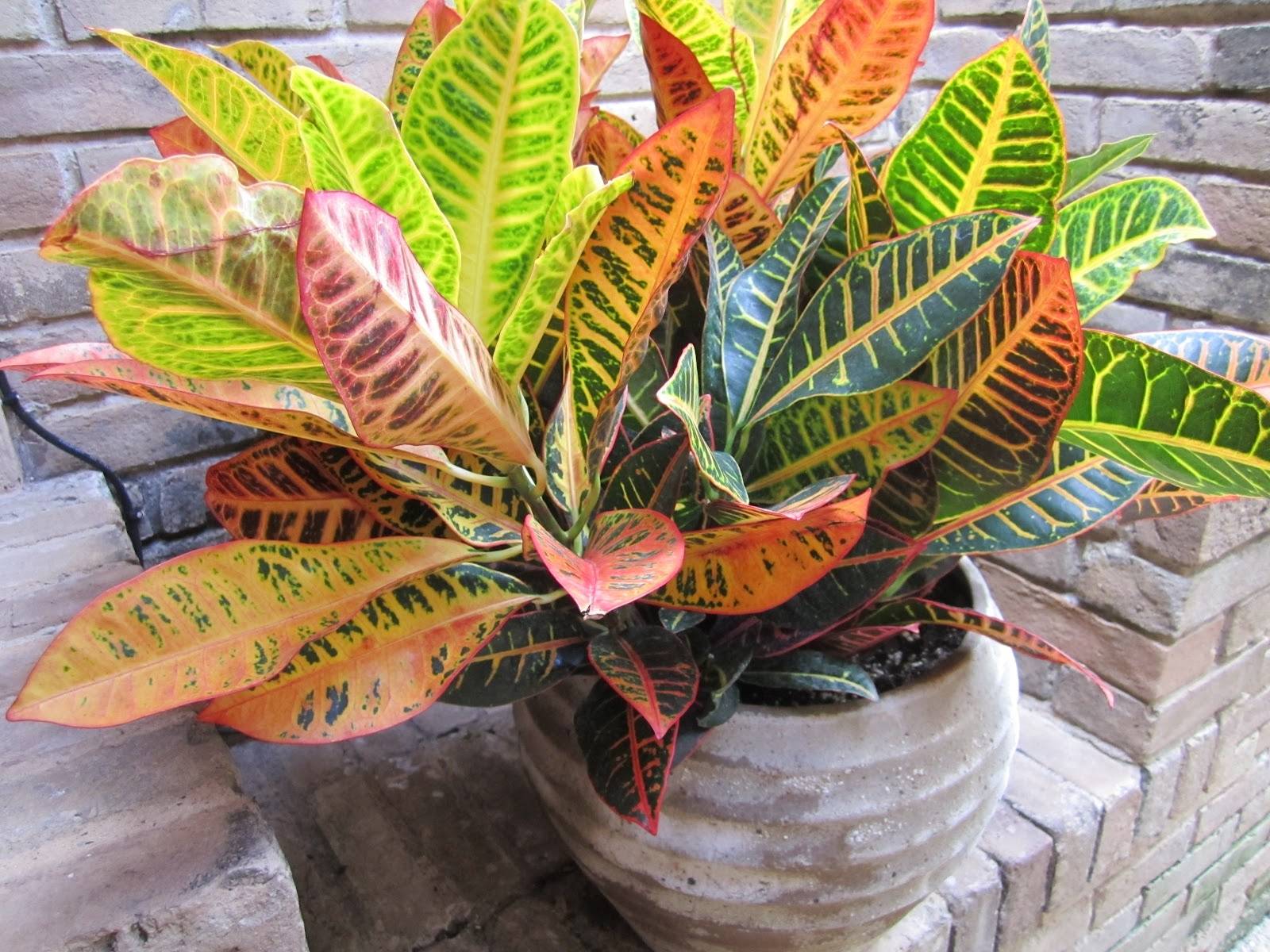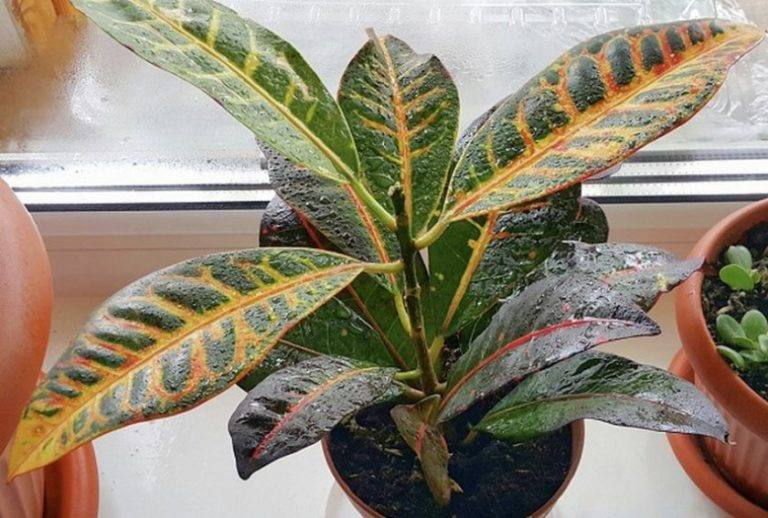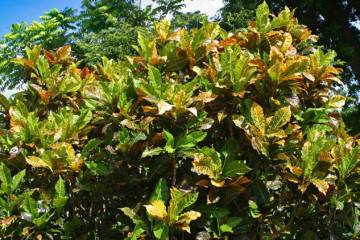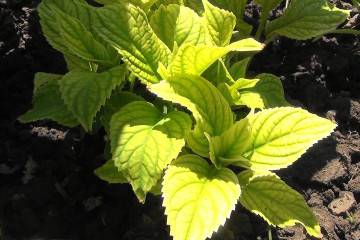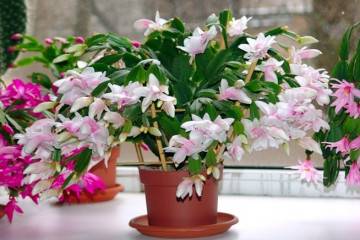Croton flower - leaves fall. The reasons
Content:
Croton (or codenium) was first discovered in Asia and Oceania, therefore, in order to grow it at home, it is necessary to provide the necessary ambient humidity and air temperature. The plant needs regular watering, with a lack of it, it will feel worse.
Home care: leaves fall
Croton needs sufficient lighting, but at the same time it must be protected from direct sunlight, therefore it is recommended to place it near a window facing the west or east side of the house, avoiding drafts and cold air.
Codenium is a type of plant, from the appearance of which it immediately becomes clear that it does not feel well. If you take timely measures, then it can be easily restored.
Why do Croton leaves dry and what to do about it
Many growers believe that croton is a rather unpretentious plant and even a beginner can grow it. But still, there are situations when the leaves of a flower suddenly begin to turn yellow, and subsequently dry up and fall off.
Croton sheds leaves for several reasons, most often they consist in improper care and basic ignorance of the requirements of this flower.
Wrong watering regime
The main and, perhaps, the most important reason why the tips of the leaves of croton dry up, is the incorrectly chosen watering regime. This tropical flower appreciates high humidity. Most of all, this applies to the summer period, when the soil should always be wet. If the watering conditions are violated, then the leaves may turn yellow completely, will go down and fall off.
To avoid premature subsidence, it is necessary to water the codenium as often as it requires. When the bush has grown to a large size, it should be watered daily in small portions. Water must be used settled and warm.
It should not be forgotten that the plant does not like an excessive amount of water; it should be watered so that stagnation of liquid does not form. To simplify the procedure, a drainage layer consisting of gravel is laid in a container with croton.
When watering, you need to moisten not only the root system, but also the leaves of the flower. This is done using a sprayer or simply by wiping with a damp cloth.
Diseases and harmful insects
The main reasons due to which the codenium can get sick are excessive dryness of the soil and insufficient humidity of the environment. Such conditions are the most favorable for the development of diseases and the appearance of parasites. Therefore, before starting treatment, you need to make sure that these factors come back to normal.
Most often, croton is attacked by such pests as spider mites, thyroid gland.
Spider mites are difficult to detect. The appearance of a light cobweb on the leaves suggests that an unexpected guest has wound up on the plant. The pest feeds on the sap of the flower, as a result of which it will dry out and lower the leaves. You can fight the tick with organic means, for example, treat the leaves and stems with a tincture of tobacco and laundry soap.
The thyroid gland is characterized by the appearance of plaques on the inner side of the leaf. This insect reproduces at a rapid pace and is capable of destroying an adult plant in a matter of days. In the fight against this parasite, tobacco tincture or soap solution is used.
Of the diseases to which the flower is most often exposed, several main ones stand out.
- Anthracnose. This disease is characterized by the appearance of red and gray spots on the leaves of various shapes. Soon after they appear, the greens begin to wither and fall off. The infected flower is isolated from the rest, then transplanted with a complete replacement of the pot and soil, and sprayed with the necessary means, such as cumulus and euparen.
- Root rot is a common disease of all colors, and codenium is no exception. The disease is characterized by yellowing and pale foliage. This is due to the low acidity of the soil. If the ends of the roots are slightly exposed, the beginning of their rotting will be noticeable. To save the plant, it is necessary to remove all affected areas and transplant croton into new soil. After that, it is desirable to treat it with phytosporin.
Temperature regime
It is always worth remembering that Croton originated in the tropics, so the correct temperature and humidity are important for him. When the temperature to the room drops to 14 ° C, the leaves of the plant begin to dry out and subsequently may fall off due to the inhibition of all basic life processes. When the temperature rises above 25 ° C, the foliage sinks and the plant begins to wither. This is especially noticeable when combined with dry air.
The most optimal temperature for the codeenium is 21-24 ° C. In the warm season, the flower can be taken out to the balcony or veranda, but with such a condition that it is not exposed to direct sunlight. Being outdoors will help strengthen the codenium's immune system.
Sometimes the question arises, what to do if Croton has dropped the leaves after transplanting? There are cases when a flower, actively growing, suddenly dropped the leaves after transplanting, as a rule, the lower ones first, but if measures are not taken in time, then one tip may remain as a result. The reason for this is usually one - it is likely that the conditions of detention were changed during the transplant, and the flower began to feel uncomfortable.
First of all, you should make sure that the whole process is carried out correctly, the soil and conditions of detention correspond to the norms. Sometimes it is enough to wait a while, during which the plant will go through a period of adaptation to a new place. If the leaves still remain lethargic, then another cause must be sought and eliminated.
How to prevent leaves from falling off
It is best not to wait for the disease of the plant, but to carry out preventive actions aimed at maintaining its health. In order for the flower to be protected from drying and falling of leaves, it is necessary to adhere to the basic recommendations:
- water the flower regularly, but do not overdo it;
- moisture is required not only for the soil, but also for leaves and stems;
- Croton should be placed as far away from drafts as possible;
- a light soil with good drainage properties and high air permeability should be used;
- it is necessary to transplant the flower on time. When the root system becomes cramped in the pot, the plant first of all begins to shed its leaves;
- for active growth, you should regularly fertilize the flower.
It is quite easy to care for the codenium; it is also within the power of inexperienced growers. But you still need to know in advance what to do if croton leaves fall, as this is a common problem that everyone faces. If you follow the recommendations correctly, the flower can be reanimated.
